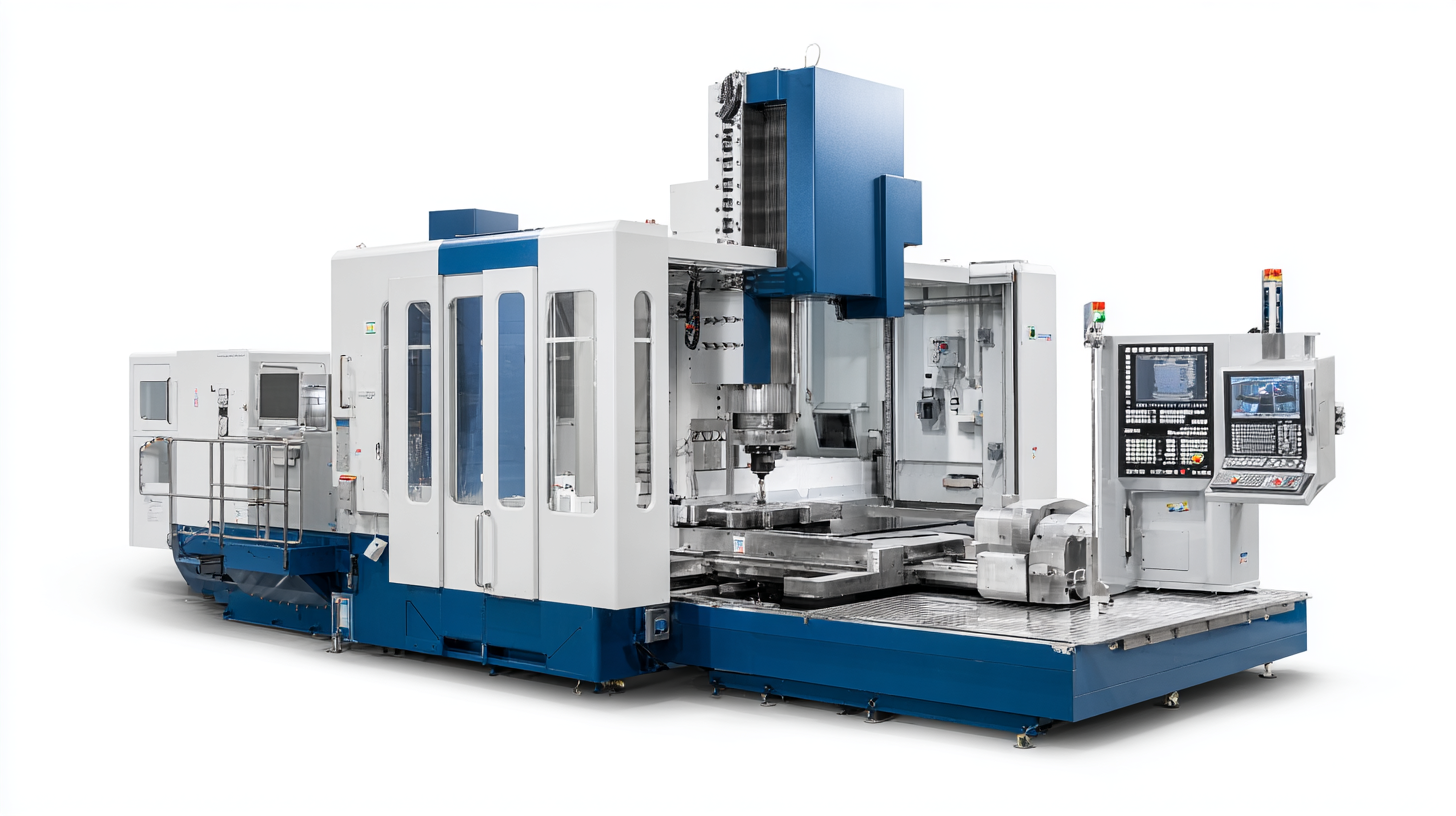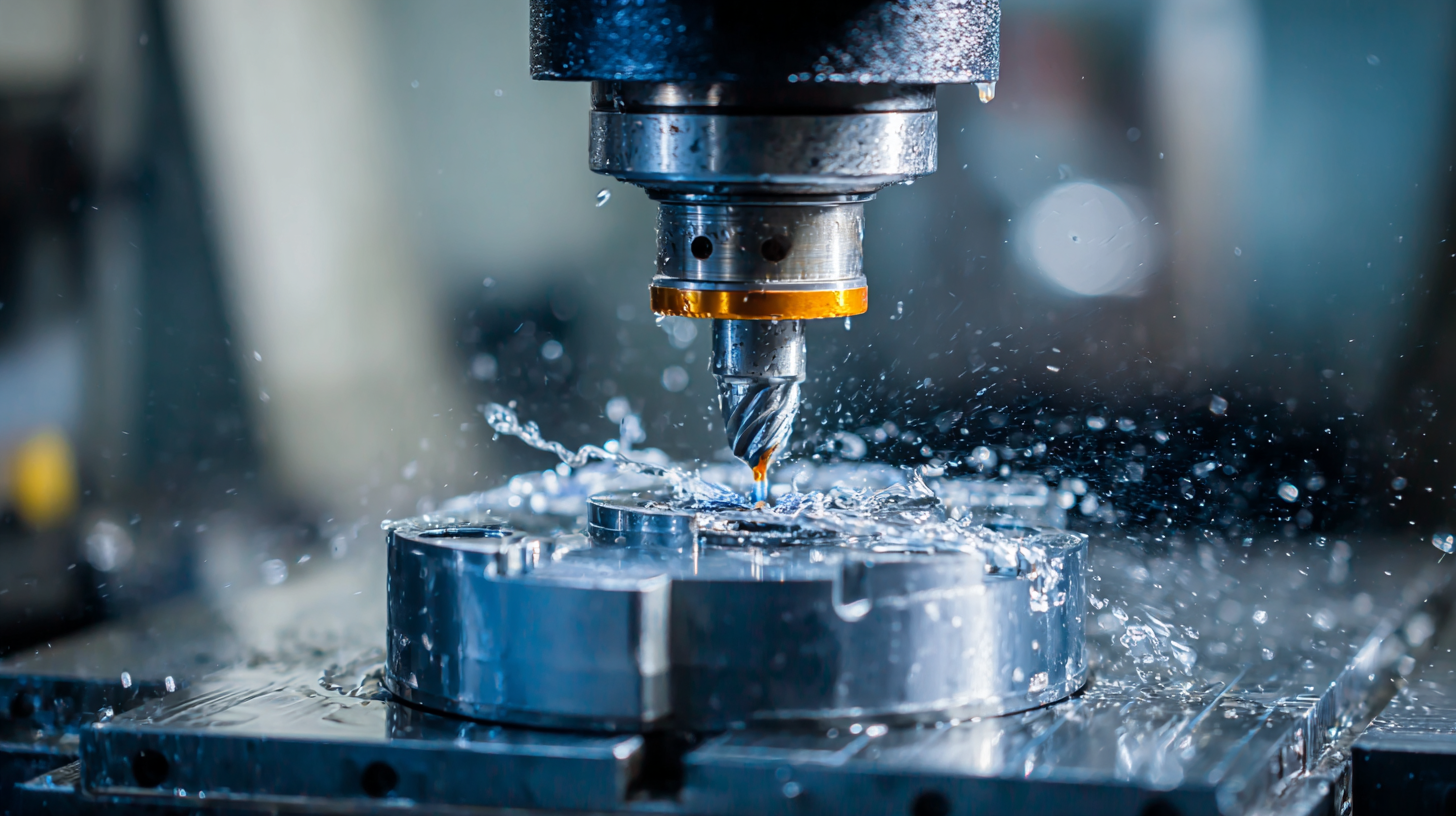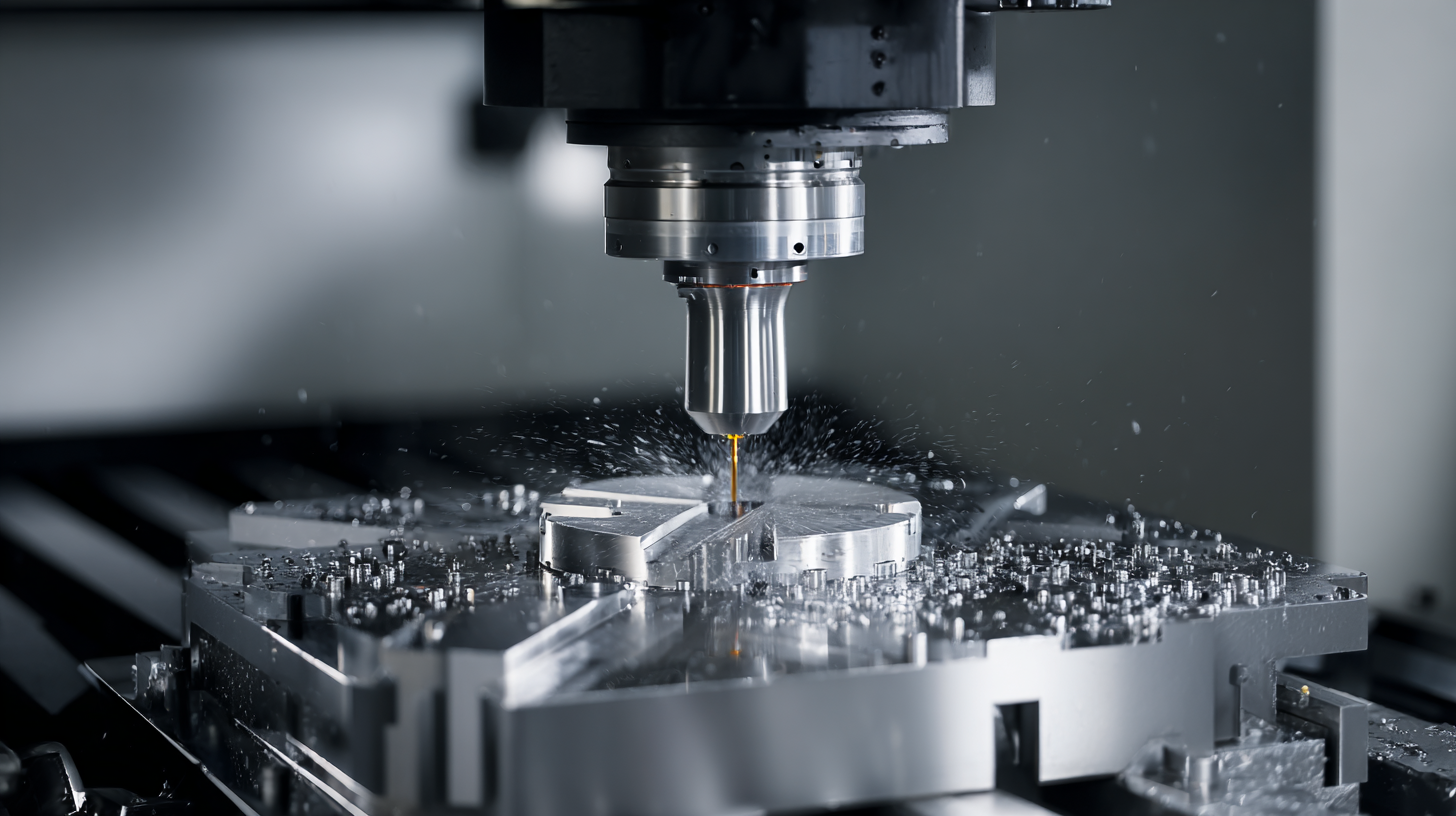Innovative Trends for Best CNC Machine Milling Machine in 2025 Shaping the Future of Manufacturing
As we approach 2025, the landscape of manufacturing is undergoing a transformative shift driven by innovative trends in technology, particularly in the realm of CNC machine milling machines. These advanced machines are not just tools; they are the backbone of modern production, enabling manufacturers to create high-precision components with unprecedented efficiency and quality. The emphasis on "从中国走向世界,品质赢得全球市场" highlights the critical role that Chinese manufacturing plays in the global market, as companies leverage cutting-edge CNC technology to enhance their production capabilities and meet international standards. In this blog, we will explore the future of CNC machine milling machines, examining the trends that are shaping their development and the impact they will have on the manufacturing sector worldwide. Join us as we delve into how these state-of-the-art machines are poised to redefine productivity and excellence in the years to come.

Emerging Technologies Driving CNC Milling Machine Innovations in 2025
In 2025, the landscape of CNC milling machines is set to be transformed by emerging technologies that prioritize both efficiency and precision. A recent market research study highlights a growing demand for CNC metal machining, driven by the need for faster production times and enhanced customization capabilities. Manufacturers are increasingly looking to integrate robotic automation with CNC systems, which not only streamlines tool changes but also optimizes material handling. This shift is geared towards addressing the complexities of modern manufacturing, where speed and efficiency are paramount.
Moreover, the MT Technology Series East 2025 will showcase how process consolidation and advancements in artificial intelligence can revolutionize machining practices. Companies are recognizing that making incremental optimizations is just as crucial as implementing sweeping technological overhauls. The maturation of digital manufacturing technologies is evident, as they have significantly amplified productivity across various sectors. As the industry continues to evolve, the focus will be on harnessing these innovative trends to shape the future of manufacturing, ensuring that CNC milling machines remain at the forefront of this transformation.
Key Features to Look for in the Best CNC Milling Machines for Future Manufacturing
As the manufacturing industry moves toward 2025, several key features are emerging as essential for the best CNC milling machines. According to a recent report by Markets and Markets, the global CNC machine market is expected to reach $100 billion by 2025, driven by advancements in automation and efficiency. Thus, manufacturers are seeking machines equipped with advanced technology such as Industry 4.0 capabilities, which enable real-time data exchange and predictive maintenance, significantly reducing downtime and operational costs.
Moreover, precision and versatility remain paramount. The use of multi-axis CNC milling machines is anticipated to increase, with a projected growth rate of 7.5% annually, as reported by Grand View Research. These machines not only enhance the precision of complex components but also allow for a wider range of operations including drilling, tapping, and contouring, making them indispensable in aerospace, automotive, and medical manufacturing sectors. Features like easy integration with CAD/CAM systems and enhanced user interfaces are also critical, allowing operators to optimize workflows and improve productivity significantly in the fast-evolving landscape of manufacturing.

Sustainability and Energy Efficiency Trends in CNC Milling Machines
As we look ahead to 2025, the CNC milling machine industry is experiencing a transformative shift towards sustainability and energy efficiency. Manufacturers are increasingly prioritizing environmentally friendly practices, integrating advanced technologies that reduce energy consumption and minimize waste in the production process. This trend is crucial, not only for meeting regulatory standards but also for fulfilling the growing demand from consumers for sustainable products. Companies that embrace energy-efficient CNC milling solutions can significantly enhance their operational efficiency while decreasing their carbon footprint, positioning themselves as leaders in the market.
The market for CNC machines is projected to expand at a compound annual growth rate (CAGR) of 5.5%, reflecting the rising popularity of automation in manufacturing. This transition is driven by technological advancements that allow CNC machines to optimize precision, speed, and energy use. Moreover, the woodworking CNC tools sector is witnessing substantial growth as well, with leading providers innovating to capture more market share. The convergence of AI and CNC technology is set to redefine manufacturing dynamics, enhancing precision and boosting productivity across various sectors, from woodworking to advanced machining applications. As these trends unfold, the landscape of manufacturing will be reshaped, leading to a sustainable and efficient future.
The Impact of AI and Automation on CNC Milling Machine Performance
The impact of AI and automation on CNC milling machine performance is poised to revolutionize the manufacturing landscape. As robotics technology evolves, machines are increasingly equipped to handle raw materials and finished components autonomously. This not only reduces labor costs but also enhances precision and speed in the machining process. By integrating automated loading and unloading systems, manufacturers can dramatically improve efficiency, minimizing downtime and streamlining production lines.

Moreover, advanced analytics and FMECA methods are being employed to increase system reliability, helping manufacturers optimize milling parameters and mitigate potential failures. The focus on data-driven decision-making and continuous improvement in CNC machining is shifting the industry toward a future where performance is maximized, and operational costs are minimized. Companies that adopt these innovative trends early are likely to gain a competitive edge, ensuring they remain at the forefront of the CNC machine market as it continues to expand significantly in the coming years.
Industry Standards and Regulations Shaping CNC Milling Technologies in 2025
As we look toward 2025, the landscape of CNC milling technology is poised for remarkable transformation, driven by evolving industry standards and regulations. These standards play a critical role in shaping not only the capabilities of milling machines but also the safety and efficiency of manufacturing processes. Organizations such as ISO and ANSI are updating their guidelines to incorporate advancements in technology, ensuring that CNC machines meet rigorous performance, accuracy, and environmental sustainability criteria. This shift emphasizes the necessity for manufacturers to adapt their operations and invest in machines that comply with these new regulations.
Moreover, the integration of smart technologies and Industry 4.0 principles will further influence CNC milling practices. The growing emphasis on automation and data-driven decision-making necessitates compliance with standards that support interoperability and real-time machine monitoring. Manufacturers who stay ahead of these regulatory changes will not only enhance their production efficiency but also reduce downtime and waste. As these innovations materialize, they will define the competitive landscape for CNC milling, fostering an ecosystem where quality and regulatory compliance are paramount. This evolution will pave the way for smarter, safer, and more efficient manufacturing solutions in the coming years.
Innovative Trends in CNC Milling Technology (2025)
This chart illustrates the projected advancements in various aspects of CNC milling technology by 2025, highlighting trends such as automation, material efficiency, and precision capabilities.
